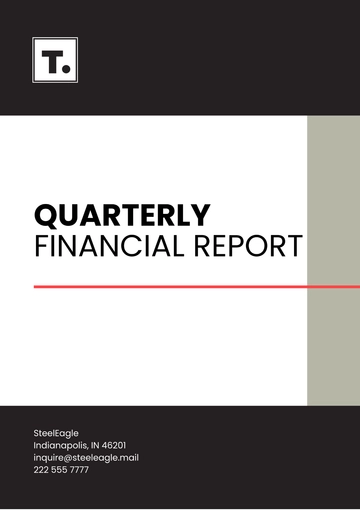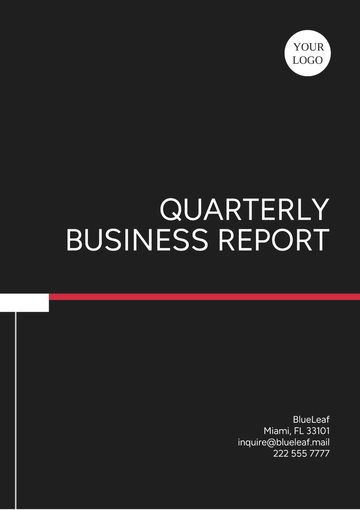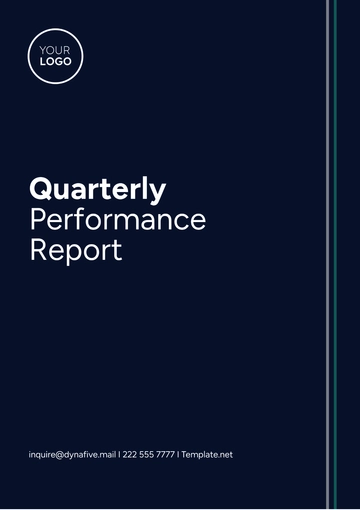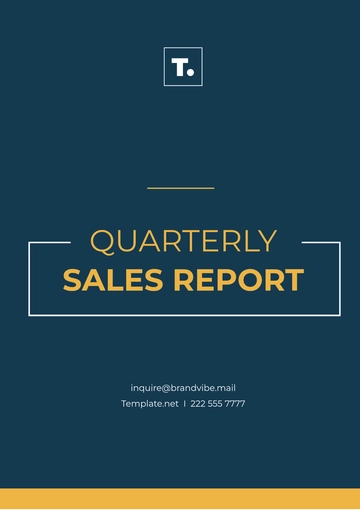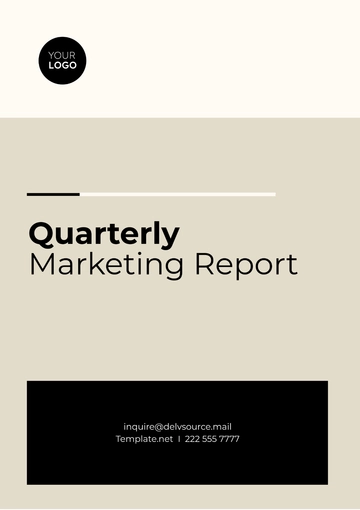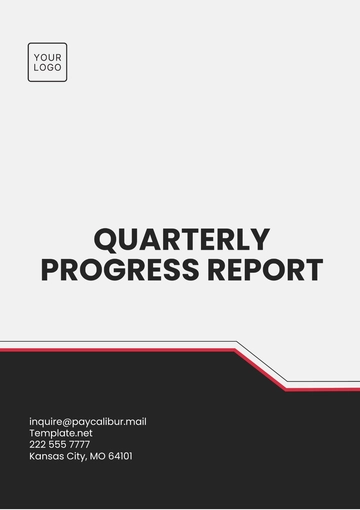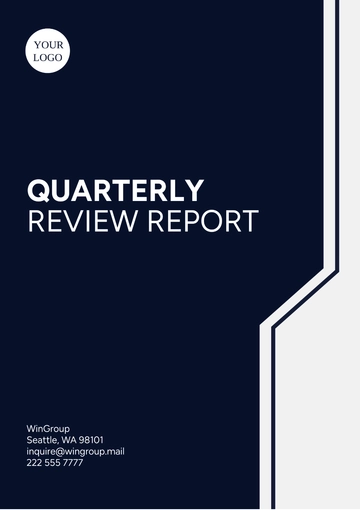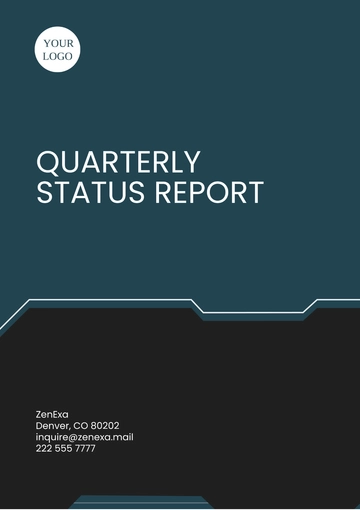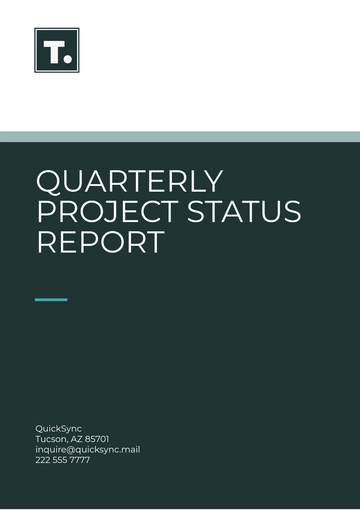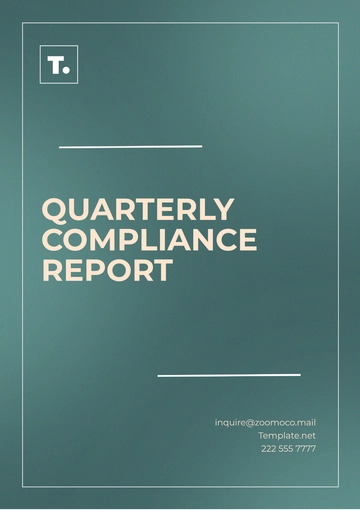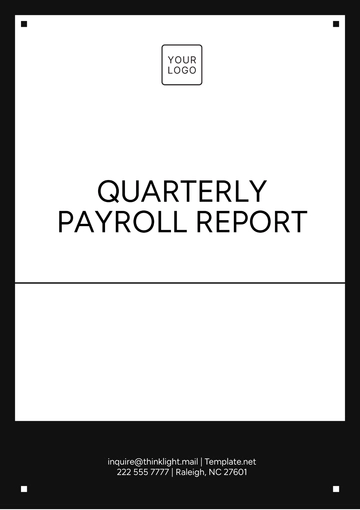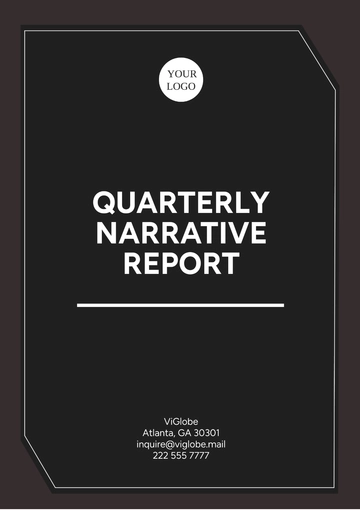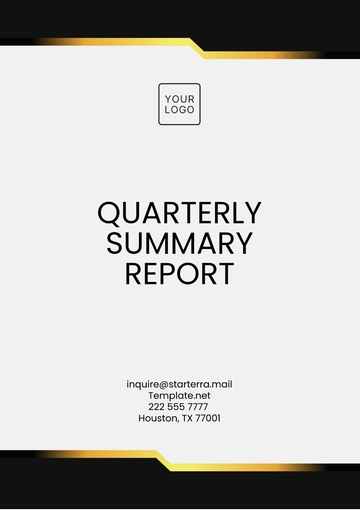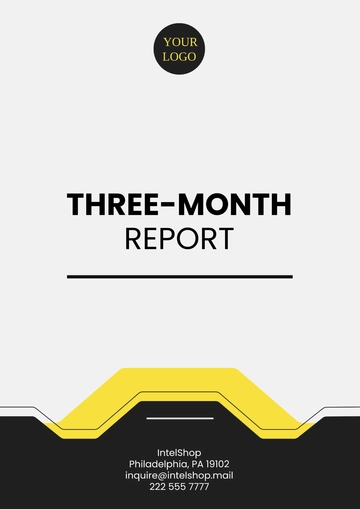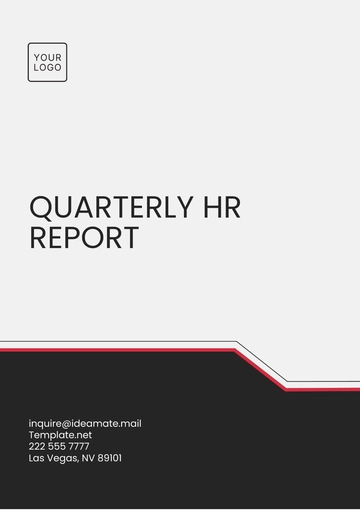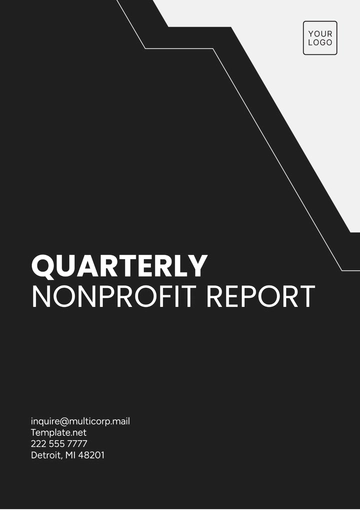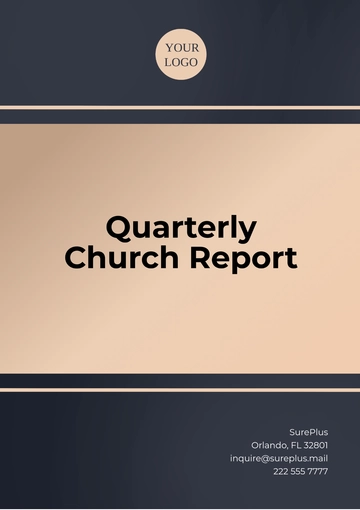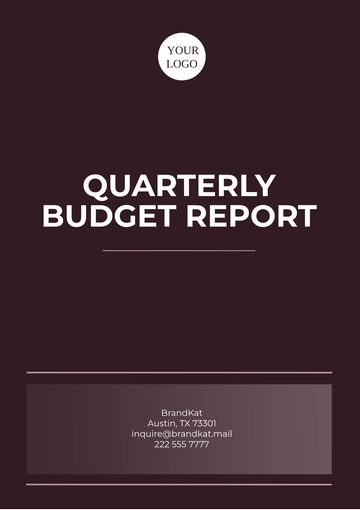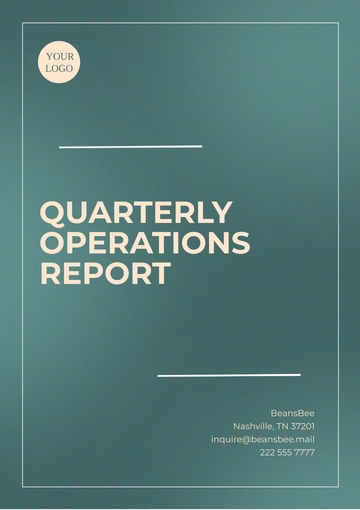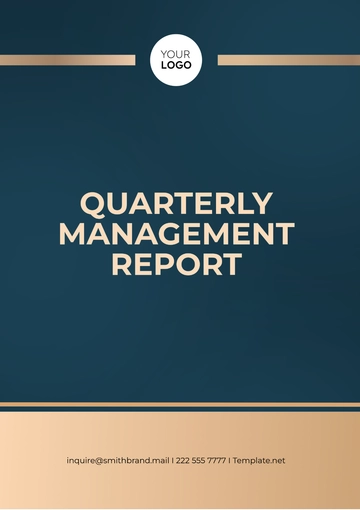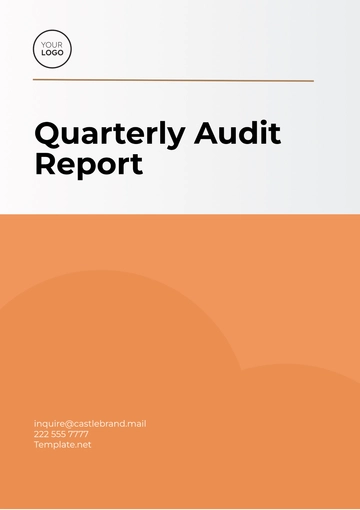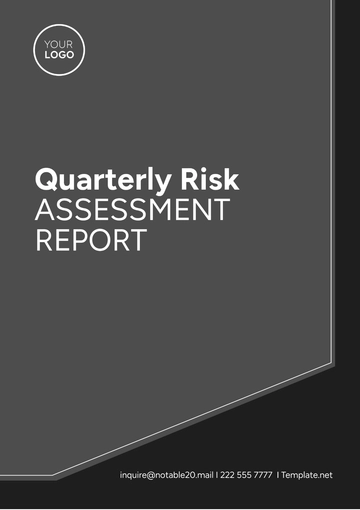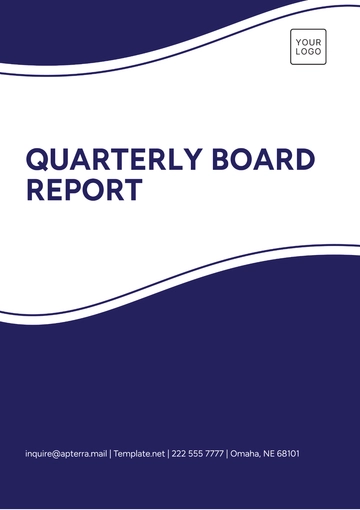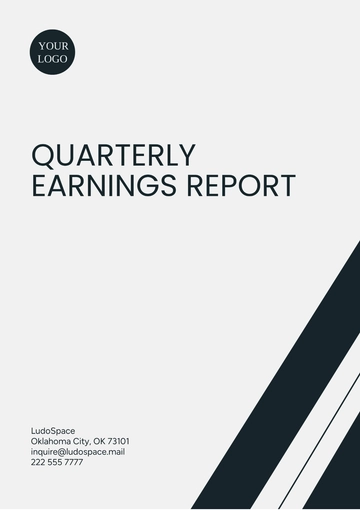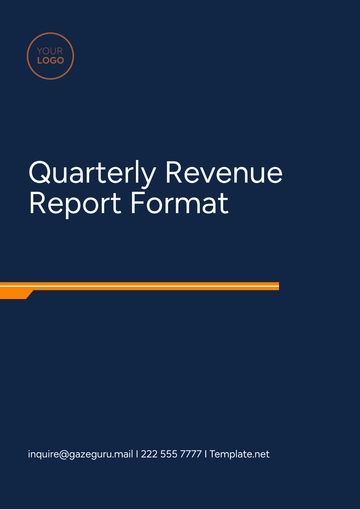Free Sales Quarterly Account Report

[Your Name]
Chief Financial Officer
[Month Day, Year]
Sales Quarterly Account Report for [Company Name]
Executive Summary:
This Sales Quarterly Account Report provides an overview of the performance of [Company Name] for the first of [Month Day, Year]. During this period, [Company Name] has demonstrated steady growth in sales and profitability. This report delves into key metrics, market analysis, and strategic initiatives that have contributed to our success.
Sales Performance:
Total Sales Revenue:
Total sales revenue for the quarter amounted to $500,000, representing a 80% increase compared to the previous quarter.
Sales Channels:
Our primary sales channels, including e-commerce, brick-and-mortar stores, and wholesale partnerships, have all shown robust growth.
Geographic Breakdown:
Sales were strongest in Region A, contributing 10% of total revenue, followed by Region B with [5%].
Product Category Performance:
The best-performing product categories were [Category A] and [Category B], with sales growth rates of [5%] and [5%], respectively.
Profitability:
Gross Profit Margin:
Our gross profit margin for the quarter remained healthy at [5%], reflecting effective cost management and pricing strategies.
Operating Expenses:
Operating expenses were carefully controlled, resulting in improved operating margins compared to the same quarter last year.
Market Analysis:
Competitive Landscape:
We faced increased competition from both established and new entrants in the clothing industry. However, our brand's unique value proposition and customer loyalty have helped us maintain a competitive edge.
Consumer Trends:
Consumer preferences have shifted towards sustainable and ethically produced clothing. [Company Name] is actively exploring eco-friendly manufacturing practices to align with these trends.
Strategic Initiatives:
Marketing:
Our marketing efforts during this quarter included successful influencer collaborations, social media campaigns, and targeted email marketing, all of which contributed to increased brand visibility and engagement.
Inventory Management:
We implemented an efficient inventory management system that reduced carrying costs and minimized out-of-stock situations, thereby improving customer satisfaction.
Expansion:
Plans for expanding into new markets, both domestically and internationally, are underway, aiming to tap into untapped customer segments.
Sustainability Efforts:
[Company Name] is committed to sustainability. We have initiated partnerships with eco-conscious suppliers and are actively exploring sustainable fabric options.
Challenges and Mitigations:
Supply Chain Disruptions:
[Company Name] faced supply chain disruptions due to global logistics challenges. We are working on diversifying suppliers and optimizing the supply chain.
Economic Uncertainty:
Economic uncertainties and inflation impacted consumer spending. To address this, we introduced budget-friendly collections without compromising quality.
Future Outlook:
We anticipate continued growth in the next quarter, with the launch of our [Upcoming Collection Name] and increased investments in digital marketing and e-commerce enhancements.
Our focus on sustainability and ethical practices aligns with consumer preferences and positions us well for future market trends.
In conclusion, the [Company Name] team has demonstrated resilience and adaptability in a challenging market environment. By leveraging strategic initiatives and maintaining our commitment to quality and sustainability, we are well-positioned for continued growth and success in the coming quarters.
Sincerely,
[Your Name]
Chief Financial Officer
- 100% Customizable, free editor
- Access 1 Million+ Templates, photo’s & graphics
- Download or share as a template
- Click and replace photos, graphics, text, backgrounds
- Resize, crop, AI write & more
- Access advanced editor
Introducing Templatenet's Sales Quarterly Account Report Template! This user-friendly, customizable tool simplifies quarterly sales reporting. Track revenue, expenses, market trends, and strategic initiatives in a concise format. Gain valuable insights, impress stakeholders, and make data-driven decisions effortlessly. Boost your sales analysis with this essential template.
You may also like
- Sales Report
- Daily Report
- Project Report
- Business Report
- Weekly Report
- Incident Report
- Annual Report
- Report Layout
- Report Design
- Progress Report
- Marketing Report
- Company Report
- Monthly Report
- Audit Report
- Status Report
- School Report
- Reports Hr
- Management Report
- Project Status Report
- Handover Report
- Health And Safety Report
- Restaurant Report
- Construction Report
- Research Report
- Evaluation Report
- Investigation Report
- Employee Report
- Advertising Report
- Weekly Status Report
- Project Management Report
- Finance Report
- Service Report
- Technical Report
- Meeting Report
- Quarterly Report
- Inspection Report
- Medical Report
- Test Report
- Summary Report
- Inventory Report
- Valuation Report
- Operations Report
- Payroll Report
- Training Report
- Job Report
- Case Report
- Performance Report
- Board Report
- Internal Audit Report
- Student Report
- Monthly Management Report
- Small Business Report
- Accident Report
- Call Center Report
- Activity Report
- IT and Software Report
- Internship Report
- Visit Report
- Product Report
- Book Report
- Property Report
- Recruitment Report
- University Report
- Event Report
- SEO Report
- Conference Report
- Narrative Report
- Nursing Home Report
- Preschool Report
- Call Report
- Customer Report
- Employee Incident Report
- Accomplishment Report
- Social Media Report
- Work From Home Report
- Security Report
- Damage Report
- Quality Report
- Internal Report
- Nurse Report
- Real Estate Report
- Hotel Report
- Equipment Report
- Credit Report
- Field Report
- Non Profit Report
- Maintenance Report
- News Report
- Survey Report
- Executive Report
- Law Firm Report
- Advertising Agency Report
- Interior Design Report
- Travel Agency Report
- Stock Report
- Salon Report
- Bug Report
- Workplace Report
- Action Report
- Investor Report
- Cleaning Services Report
- Consulting Report
- Freelancer Report
- Site Visit Report
- Trip Report
- Classroom Observation Report
- Vehicle Report
- Final Report
- Software Report

